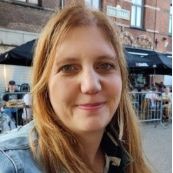Adult Stem Cells in Human Disease
A special issue of Cells (ISSN 2073-4409). This special issue belongs to the section "Stem Cells".
Deadline for manuscript submissions: closed (25 October 2025) | Viewed by 9072
Special Issue Editors
Interests: dental pulp stem cells; oncology; peripheral neuropathies; Charcot-Marie-Tooth disease
Interests: dental pulp stem cells; Charcot-Marie-Tooth disease; nerve repair; Schwann cells; dental pulp stem cells; iPSC; animal models
Special Issue Information
Dear Colleagues,
Dental pulp stem cells (DPSCs) have emerged as a promising tool in disease modeling and regenerative medicine. Found within the dental pulp, these stem cells possess the ability to differentiate into various cell types, including neural, bone, cartilage, and endothelial cells. In addition, these remarkable cells produce a wide variety of factors with beneficial results in the context of immunomodulation, inflammation, angiogenesis, etc. These unique characteristics have captured the attention of researchers and clinicians, as DPSCs offer potential therapeutic applications in a wide range of diseases and disorders.
This Special Issue will explore the use of DPSCs in several diseases and their therapeutic potential. We encourage submissions in the form of original research articles and reviews on all aspects related to the topic. Expert articles shedding light on the following topics are highly welcome: DPSC-based disease modeling, regenerative medicine, and other therapeutic approaches.
Prof. Dr. Esther Wolfs
Dr. Tim Vangansewinkel
Dr. Annelies Bronckaers
Guest Editors
Manuscript Submission Information
Manuscripts should be submitted online at www.mdpi.com by registering and logging in to this website. Once you are registered, click here to go to the submission form. Manuscripts can be submitted until the deadline. All submissions that pass pre-check are peer-reviewed. Accepted papers will be published continuously in the journal (as soon as accepted) and will be listed together on the special issue website. Research articles, review articles as well as short communications are invited. For planned papers, a title and short abstract (about 250 words) can be sent to the Editorial Office for assessment.
Submitted manuscripts should not have been published previously, nor be under consideration for publication elsewhere (except conference proceedings papers). All manuscripts are thoroughly refereed through a single-blind peer-review process. A guide for authors and other relevant information for submission of manuscripts is available on the Instructions for Authors page. Cells is an international peer-reviewed open access semimonthly journal published by MDPI.
Please visit the Instructions for Authors page before submitting a manuscript. The Article Processing Charge (APC) for publication in this open access journal is 2700 CHF (Swiss Francs). Submitted papers should be well formatted and use good English. Authors may use MDPI's English editing service prior to publication or during author revisions.
Keywords
- dental pulp stem cells
- disease
- regenerative medicine
- disease modeling
Benefits of Publishing in a Special Issue
- Ease of navigation: Grouping papers by topic helps scholars navigate broad scope journals more efficiently.
- Greater discoverability: Special Issues support the reach and impact of scientific research. Articles in Special Issues are more discoverable and cited more frequently.
- Expansion of research network: Special Issues facilitate connections among authors, fostering scientific collaborations.
- External promotion: Articles in Special Issues are often promoted through the journal's social media, increasing their visibility.
- Reprint: MDPI Books provides the opportunity to republish successful Special Issues in book format, both online and in print.
Further information on MDPI's Special Issue policies can be found here.







